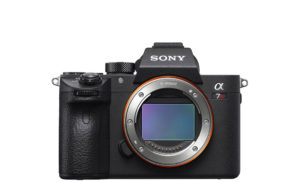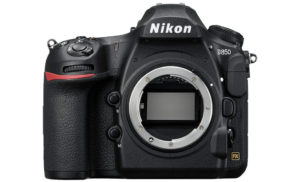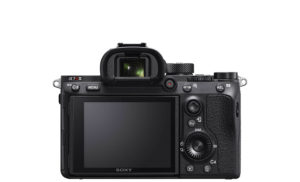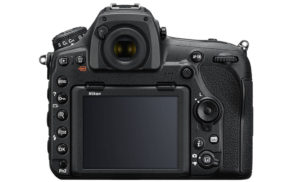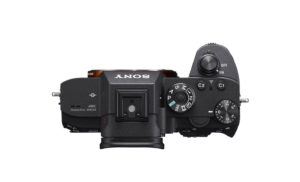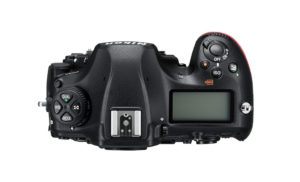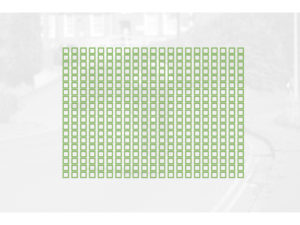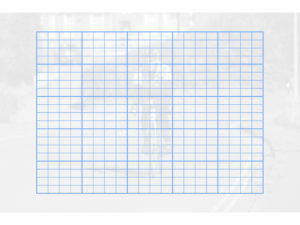Despite being part of different camera systems, the Sony A7r mark III and the Nikon D850 have two important characteristics in common.
First are their full frame sensors which are currently the best the market has to offer. They are based on the same BSI technology and lack an Anti-Aliasing filter to maximise sharpness. The Nikon has slightly more megapixels (45.7MP vs 42.4MP) but it’s fair to say that the performance should be quite similar.
Second, they are both key players in a market that is rapidly changing. The A7r III, on one hand, is one of the most advanced mirrorless cameras released by Sony to date. The D850, on the other, is a camera delivers excellent results in terms of image quality and performance but doesn’t revolutionise the DSLR market. Metaphorically speaking, it’s a little bit like a race between the young and talented pilot and the experienced champion.
Of course, unlike car racing, there is no need to declare a clear winner in photography, but if you are still curious to see which one could be more suited to your needs, here are the main differences to get you started!
Ethics statement: The information supplied in this article is based on official specifications and press releases. If we get the chance to test the two cameras side by side, we will publish a full comparison. We were not asked to write anything about these cameras, nor were we provided with any sort of compensation. Within the article, there are affiliate links. If you decided to buy something after clicking the link, we will receive a small commission. To know more about our ethics, you can visit our full disclosure page. Thank you!
1. Design
A difference that becomes immediately obvious when you set your eyes on the two cameras for the first time is the size and design. The D850 is larger, taller and heavier than the A7r III (1kg vs 673g). The Sony is not only smaller and lighter but it also has sharper lines by comparison. Both models feature a magnesium alloy body and are weather sealed.
Concerning the ease of use, the Nikon has lots of buttons and dials with pre-configured functions that make every important setting easy to access. Some of them are back illuminated to facilitate working in low light conditions. Another nice detail is the top monochrome LCD screen that displays many different settings. One advantage of the A7r III is more function buttons which make the camera more customisable also thanks to the My Menu section.
Both cameras have a touch sensitive screen that can be tilted up and down. The LCD on the Nikon is larger (3.2 vs 3.0 inches) with more resolution (2.359k dots vs 1.440k dots). On the Sony, the touch screen can only be used to move the focus point while on the Nikon it can be used to navigate the menu as well.
You will find a dual memory card slot on both products although the type of card that can be used differs: the Sony can fit two SD cards (one UHS-II), while the Nikon has one SD UHS-II slot and one XQD slot.
Finally concerning the connectivity interface, the A7r III has a mic input, headphone output, HDMI Type D, USB 3 Type C, USB/Multi port and flash sync port. The D850 has a Type C HDMI, Micro USB, audio in & out and a 10 pin remote terminal.
2. Viewfinder
A key difference in technology between these two cameras concerns the viewfinder. Like all DSLRs, the Nikon D850 uses an optical viewfinder: the light coming through the lens is reflected by a series of mirrors and sent to the finder. This gives you a clear and bright view of your scene with no lag. The specifications include 0.75x magnification, a 100% field of view and a 17mm eye point.
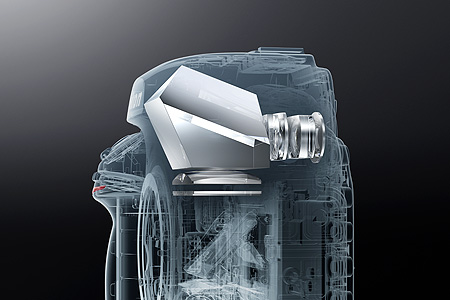
The Sony A7r III uses the latest generation electronic viewfinder from the brand with a 3686k dot OLED panel. The advantage here is that unlike OVFs, you see a real time preview of the exposure, white balance and colour just like the one you get on the rear screen of the camera. (With the Nikon you need to activate the live view mode.)
The Sony EVF has a magnification of 0.78x, a 23mm eyepoint and Zeiss T* coating for better corner to corner clarity. The frame rate can be selected between 60fps and 120fps.

3. Autofocus
Another characteristic that sets the two cameras apart is the autofocus system. On DSLRs, there is a separate sensor where all the AF points are located while on the Sony (and all mirrorless cameras), the AF points are embedded into the image sensor directly.
The A7r mk3 features 399 phase and 425 contrast detection points and the minimum sensitivity is -3Ev (f/2). Lots of AF area options are available including Wide, Zone, various sizes for the Single point, and Lock-On AF. The cherry on top is EyeAF, the best eye detection AF I’ve ever tried.
Having the phase detection points on the image sensor gives the camera an extra advantage when recording video. It is capable of delivering faster, more accurate results than the D850 which uses contrast detection in live view mode.
The D850 features the same AF system of the flagship Nikon D5 with 153 points (99 of them are cross-type). The sensor has 180,000 pixel RGB metering with a minimum sensitivity of -3Ev but the 15 central points perform better at -4Ev up to f/8. Single point and different groups are available (153, 72 or 25) as well as the excellent 3D Matrix mode.
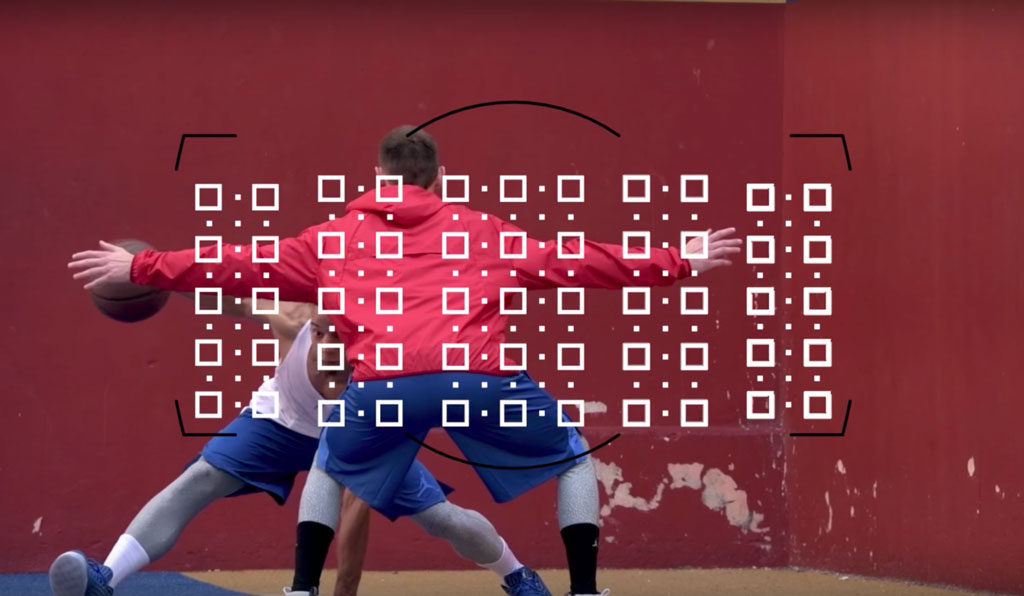
4. Continuous shooting and buffer
The A7r III can shoot at a maximum speed of 10fps with AF tracking. Up to 8fps, you get live view with short blackouts while at the fastest speed, the last image taken is shown instead. These speeds are available with the mechanical, first electronic curtain or electronic shutter.
The D850 can shoot at 7fps with continuous AF, or 9fps if you add the optional battery grip (MB-D18) and optional EN-EL18a/b battery. It has an electronic shutter option that only works with Live View but the maximum speed is limited to 6fps with no C-AF. Note that you can increase the speed to 30fps in APS-C mode (DX format).
As for the buffer capabilities, the D850 is superior, managing 51 RAW (14-bit lossless) or 170 RAW (12-bit lossless) files in a burst. Adding the optional battery grip will improve the buffer depth even more. The Sony can take 28 JPGs and 76 compressed RAW files by comparison.
5. ISO sensitivity
Although the sensors are very similar as explained in the introduction, we though it was worth highlighting a minor difference: the ISO sensitivity.
The A7r III has a native range of 100 to 32000 ISO, with extended values down to ISO 50 and up to ISO 102400.
The D850 works with a native range of 64 to 25,600 ISO. These values can be extended to 32 and 102,400 ISO.
6. Video capabilities
The Sony A7r mark III can record 4K up to 30fps and 100Mbps. You can choose between two formats: full frame and Super35/APS-C. The latter gives you full pixel readout and is the best quality the camera has to offer in terms of sharpness and ISO performance. In 1080p you can record from 1fps to 120fps (Quick&Slow Motion mode).
The D850 can record 4K up to 30fps with a higher bitrate of 144Mbps using the entire sensor which means no full pixel readout. In 1080p you can record up to 120fps.
Concerning colours and dynamic range control, the A7r III has more to offer with its dedicated Picture Profiles that include S-Log2 and S-Log3 gamma curves and the new HLG profile. The D850 includes a Flat profile that increases the dynamic range a little but it’s not a true Log mode.
7. Image stabilisation
The Sony A7r III features in-body 5-axis stabilisation. It can work with all E-mount or adapted lenses that communicate electronically with the camera. Without electronic contacts, 3 axes can still be used. The official compensation rate is 5.5-stops by CIPA standards. With lenses that feature optical stabilisation, the camera adds 3 axes from the sensor for better results.
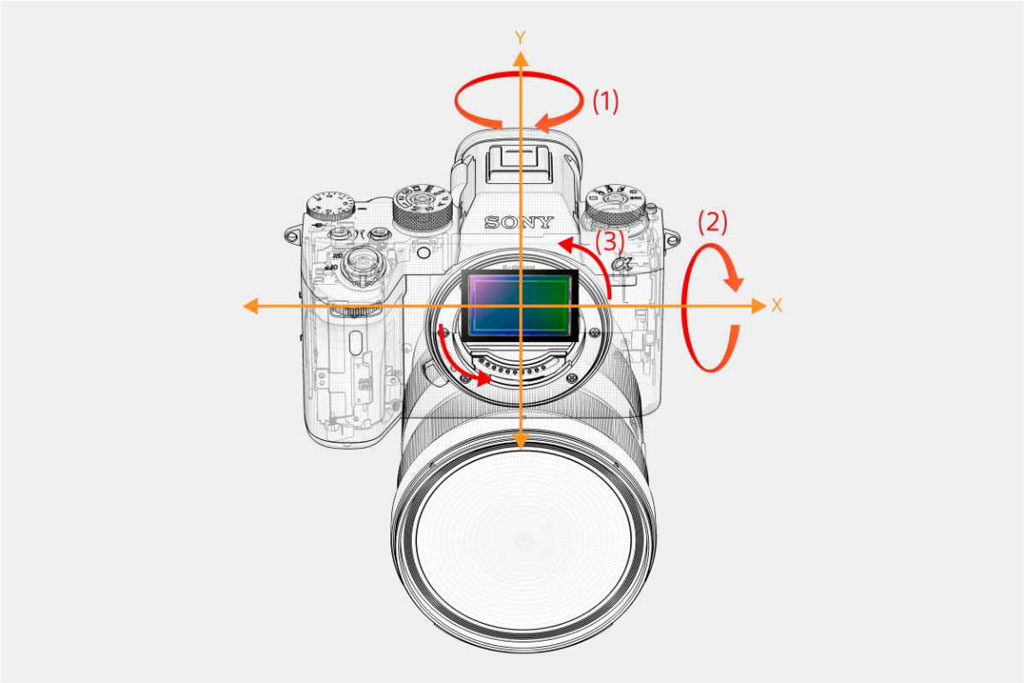
The Nikon doesn’t have in-body stabilisation and thus relies on the optical stabilisation of its lenses (VR system). In video mode there is a digital stabilisation option but it only works in 1080p, not 4K.
8. Extra features
The A7r III doesn’t include a lot of extra features except for some Bracketing modes and special filter effects. What’s more, like the A9, the camera doesn’t support Sony’s Playmemories apps, meaning that we lose access to many useful features such as time-lapse, multiple exposure and star trail, to name a few. However there is one thing that is quite interesting on the Sony and that not many cameras can do: Pixel Shift Multi Shooting.
Using its in-body stabilisation system, it takes 4 images in a row, moving the sensor by one pixel between each shot. Via a separate and free Sony software, you can combine these four images into a single 42.4MP shot that has better colour accuracy than the normal shooting mode.
![]()
The D850 comes with other features such as the time-lapse capabilities in 4K and 8K (for the latter, the video must be created in post), Focus Stacking and a Negative Digitising feature that allows you to scan film (optional accessories are needed though).
Concerning wireless communication, both cameras offer Wifi and Bluetooth but on the Sony the latter works for geotagging purposes only. The A7r III also gets NFC technology.
9. Battery life
The Sony A7r III uses the latest battery from the brand which is larger and more capable than the old NP-FW50. The official specifications state up to 650 shots or 115 minutes of video recording. The optional battery grip can house two batteries, effectively doubling the life span.
Unsurprisingly the D850 remains superior with a claimed battery life of 1,800 shots or 70 minutes of 4K video. The optional battery grip and larger battery (same as the D5) can improve the performance up to more than 5000 shots.
10. Lenses
When talking about cameras that belong to different systems, it is also important to mention the choice and variety of lenses available for each.
In the case of the Nikon, there is plenty of choice: more than 70 lenses are available in the current catalog and you can also find older discontinued lenses and a vast selection from third-party brands such as Tamron and Sigma.

For full frame E-mount cameras there are now no fewer than 25 FE lenses from Sony, which is excellent considering the age of the system. Also on the list are some lenses from Zeiss and Samyang that are specifically designed for the system. You have the option to adapt DSLR lenses thanks to shorter mount flange distance and the on-sensor phase detection AF as well.

Conclusion
These two cameras will easily become the subjects of many comparisons over the following months, as they both represent the best of what each brand has to offer at this point in time.
The A7r III is one the most interesting examples of high quality compressed into a compact body. Indeed the fact that Sony managed to include two memory slots and a larger battery without increasing the size of the body is quite the feat. The stills and video quality won’t be put into question and the updated AF system should make the camera a popular choice among sports and wildlife photographers who want to benefit from a high resolution sensor.
As for the Nikon camera, it is proof that DSLRs are anything but dead, not only due to the updates the camera has received but also because of the vaster selection of lenses available for the system. That being said, Sony is growing quickly in terms of popularity and sales and at this rate, it won’t take long for them to catch Nikon up.
Speaking of sales, let’s conclude with the pricing of the two cameras, which is actually quite similar: the A7r III can be found for $3200 / £3,200 / €3,500 while the D850 costs $3300 / £3500 / €3790.
Check price of the Sony A7r III on
Check price of the Nikon D850 on
You may also be interested in the following articles:

